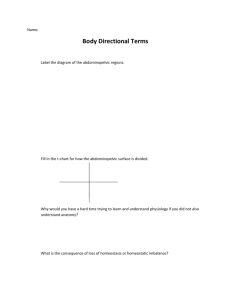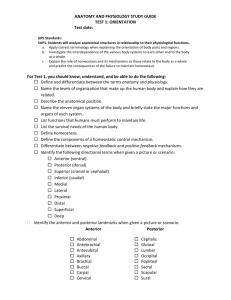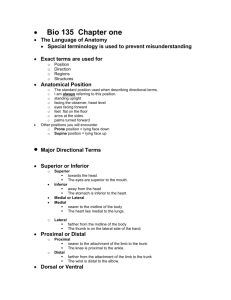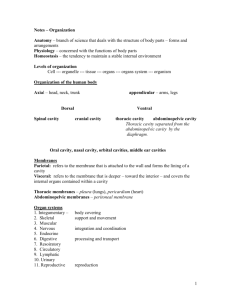Body Planes, Directions, and Cavities
advertisement
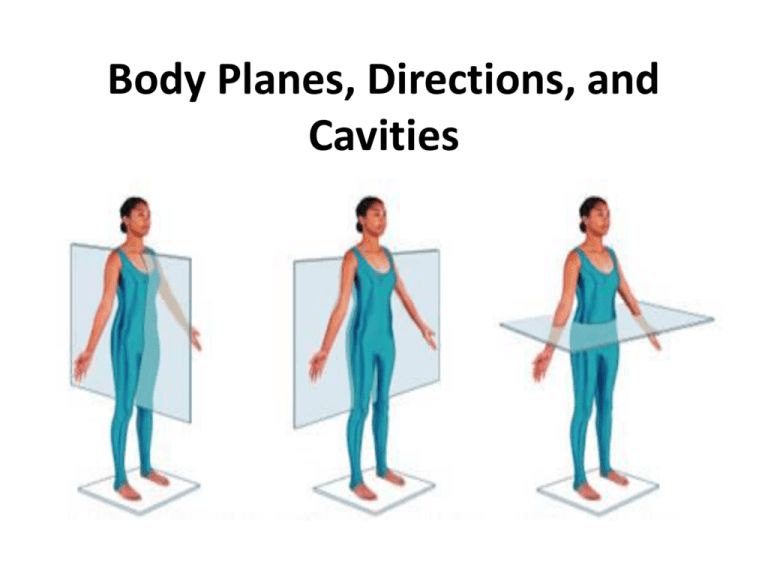
Body Planes, Directions, and Cavities Body Planes • Imaginary lines drawn through the body to separate the body into sections Transverse Plane • A horizontal plane dividing the body into a top and bottom half – Superior = body parts above others – Inferior = body parts below others Median/(Mid)Sagittal Plane • Divides the body into right and left sides – Medial = body parts located near the middle/midline of the body – Lateral = body parts located away from the middle/midline of the body Frontal/Coronal Plane • Divides the body into front and back sections – Anterior (Ventral) = body parts on the front of the body – Posterior (Dorsal) = body parts on the back of the body Additional Directional Terms: • Superficial = towards the surface • Deep = internal • Proximal = body parts closer to the point of reference (where the limb joins the body) • Distal = body parts farther from the point of reference (where the limb joins the body) – **Proximal and distal are only used when referring to the limbs** Body Cavities • Spaces within the body which contain vital organs • Dorsal Body Cavity – Cranial cavity – Spinal cavity • Ventral Body Cavity – Thoracic cavity – Diaphragm—dome-shaped muscle that aids in breathing and separates the thoracic and abdominopelvic cavities – Abdominopelvic cavity Dorsal Body Cavity • Cranial Cavity – Contains the brain • Spinal Cavity – Contains the spinal cord Ventral Body Cavity • Thoracic Cavity – Pleural cavity = contains the lungs – Pericardial cavity = contains the heart – Mediastinum = central region that separates the lungs sits between the sternum and the vertebral column Ventral Body Cavity (ctd.) • Abdominopelvic cavity – Abdominal cavity = upper part; contains the stomach, small intestines, most of the large intestines (except colon and rectum), liver, gallbladder, pancreas and spleen – Pelvic cavity = lower part; contains the urinary bladder, reproductive organs, and the last part of the large intestine (colon and rectum) Abdominal Regions and Quadrants


